-
Pick up from the Robotwala Store
To pick up today
Free
-
Shiprocket from Air
Our courier will deliver to the specified address
3-4 Days
139
-
Shiprocket from Surface
courier will deliver to the specified address
5-7 Days
90
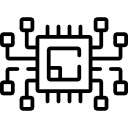 Sensors & Module
Sensors & Module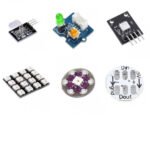 LED Module
LED Module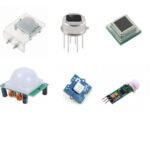 PIR Sensor
PIR Sensor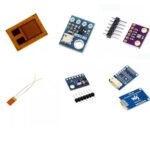 Pressure Sensors
Pressure Sensors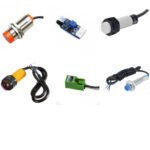 Proximity Sensor
Proximity Sensor Real Time Clock (RTC) Module
Real Time Clock (RTC) Module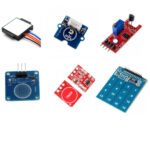 Touch Sensor
Touch Sensor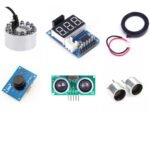 Ultrasonic Sensor
Ultrasonic Sensor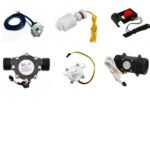 Water Level & Water Flow Sensor
Water Level & Water Flow Sensor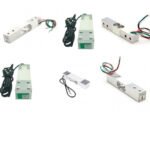 Weighing Scale Sensor
Weighing Scale Sensor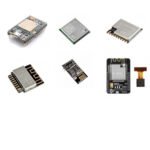 Ai Thinker ESp Wifi Module
Ai Thinker ESp Wifi Module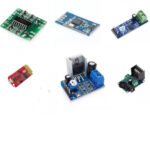 Audio Amplifier Module
Audio Amplifier Module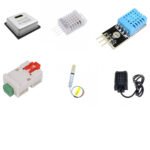 Humidity & Temperature Sensor
Humidity & Temperature Sensor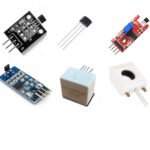 Hall Effect Sensor
Hall Effect Sensor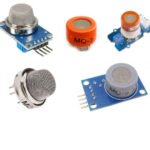 Gas Sensors
Gas Sensors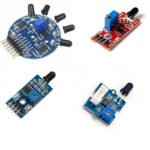 Flame Sensors
Flame Sensors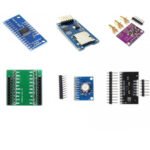 Breakout Board
Breakout Board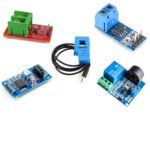 Current & Volatage Sensor
Current & Volatage Sensor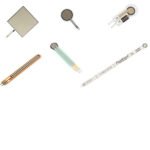 Force Sensor
Force Sensor Boards & Programmer
Boards & Programmer
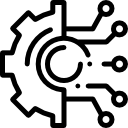 Electronic Components
Electronic Components
 Power Supply
Power Supply
 Robot kits & Parts
Robot kits & Parts
 Tools & Connectors
Tools & Connectors
 Display
Display
 E Bike
E Bike
 3d Printer & Parts
3d Printer & Parts
 Raspberry Pi
Raspberry Pi
 batteries chargers & Accessories
batteries chargers & Accessories Drone parts
Drone partsThe 74HC194/74HCT194 is a 4-bit bidirectional universal shift register. The synchronous operation of the device is determined by the mode select inputs (S0, S1). In parallel load mode (S0 and S1 HIGH) data appearing on the D0 to D3 inputs, when S0 and S1 are HIGH, is transferred to the Q0 to Q3 outputs. When S0 is HIGH and S1 is LOW data is entered serially via DSL and shifted from left to right; when S0 is LOW and S1 is HIGH data is entered serially via DSR and shifted from right to left. DSR and DSL allow multistage shift right or shift left data transfers without interfering with parallel load operation. If both S0 and S1 are LOW, existing data is retained in a hold mode. Mode select and data inputs are edge-triggered, responding only to the LOW-to-HIGH transition of the clock (CP). Therefore, the only timing restriction is that the mode control and selected data inputs must be stable one set-up time prior to the positive transition of the clock pulse. When LOW, the asynchronous master reset (MR) overrides all other input conditions and forces the Q outputs LOW. Inputs include clamp diodes. This enables the use of current limiting resistors to interface inputs to voltages in excess of VCC.
Hurry and get discounts on all Apple devices up to 20%
Sale_coupon_15
₹21.24
Inclusive of GST
To pick up today
Free
Our courier will deliver to the specified address
3-4 Days
139
courier will deliver to the specified address
5-7 Days
90
Payment Methods:
The 74HC194/74HCT194 is a 4-bit bidirectional universal shift register. The synchronous operation of the device is determined by the mode select inputs (S0, S1). In parallel load mode (S0 and S1 HIGH) data appearing on the D0 to D3 inputs, when S0 and S1 are HIGH, is transferred to the Q0 to Q3 outputs. When S0 is HIGH and S1 is LOW data is entered serially via DSL and shifted from left to right; when S0 is LOW and S1 is HIGH data is entered serially via DSR and shifted from right to left. DSR and DSL allow multistage shift right or shift left data transfers without interfering with parallel load operation. If both S0 and S1 are LOW, existing data is retained in a hold mode. Mode select and data inputs are edge-triggered, responding only to the LOW-to-HIGH transition of the clock (CP). Therefore, the only timing restriction is that the mode control and selected data inputs must be stable one set-up time prior to the positive transition of the clock pulse. When LOW, the asynchronous master reset (MR) overrides all other input conditions and forces the Q outputs LOW. Inputs include clamp diodes. This enables the use of current limiting resistors to interface inputs to voltages in excess of VCC.
JESD8C (2.7 V to 3.6 V)
JESD7A (2.0 V to 6.0 V)
HBM JESD22-A114F exceeds 2000 V
MM JESD22-A115-A exceeds 200 V
| Parameter | Min | Max | Unit |
| Supply Voltage (VCC) | 2 | 6 | V |
| DC Input or Output Voltage (VIN, VOUT) | 0 | Vcc | V |
| Ambient Temperature | -40 | +125 | ?C |
| Input Rise or Fall Times | |||
| VCC = 2.0V | 625 | ns | |
| VCC = 4.5V | 139 | ns | |
| VCC = 6.0V | 83 | ns |
1 X 74HC194 4-Bit Bi-directional Shift Register IC (74194 IC) DIP-16 Package
Operating voltage | 2.5 3.0V |
Pixel Resolution | 0.3MP |
Photosensitive array | 640 x 480 |
Optical Size | 1.6 inch |
Angel of view | 67 degrees |
Maximum Frame Rate | 30fps VGA |
Sensitivity | 1.3V/(Lux-sec) |
Dormancy | Less than 20A |
Power consumption | 60mW/15fpsVGA YUV |
Temperature operation Range | -30 C ~ 70 C |
Pixel area | 3.6 x 3.6 m |
Signal to noise ratio (SNR) | 46 dB |
Dynamic range | 52 dB |
In stock
In stock
In stock
In stock
In stock
 Boards & Programmer
Boards & Programmer
 Sensors & Module
Sensors & Module
 Audio Amplifier Module
Audio Amplifier Module Current & Volatage Sensor
Current & Volatage Sensor Breakout Board
Breakout Board Flame Sensors
Flame Sensors Force Sensor
Force Sensor Gas Sensors
Gas Sensors Hall Effect Sensor
Hall Effect Sensor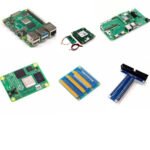 Boards & Modules
Boards & Modules Humidity & Temperature Sensor
Humidity & Temperature Sensor LED Module
LED Module PIR Sensor
PIR Sensor Pressure Sensors
Pressure Sensors Proximity Sensor
Proximity Sensor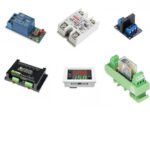 Relay Module
Relay Module Real Time Clock (RTC) Module
Real Time Clock (RTC) Module Touch Sensor
Touch Sensor Ultrasonic Sensor
Ultrasonic Sensor Water Level & Water Flow Sensor
Water Level & Water Flow Sensor Weighing Scale Sensor
Weighing Scale Sensor Robot kits & Parts
Robot kits & Parts Power Supply
Power Supply Electronic Components
Electronic Components Tools & Connectors
Tools & Connectors Drone parts
Drone parts 3d Printer & Parts
3d Printer & Parts batteries chargers & Accessories
batteries chargers & Accessories E Bike
E Bike Sensors & Module
Sensors & Module
 LED Module
LED Module PIR Sensor
PIR Sensor Pressure Sensors
Pressure Sensors Proximity Sensor
Proximity Sensor Real Time Clock (RTC) Module
Real Time Clock (RTC) Module Touch Sensor
Touch Sensor Ultrasonic Sensor
Ultrasonic Sensor Water Level & Water Flow Sensor
Water Level & Water Flow Sensor Weighing Scale Sensor
Weighing Scale Sensor Ai Thinker ESp Wifi Module
Ai Thinker ESp Wifi Module Audio Amplifier Module
Audio Amplifier Module Humidity & Temperature Sensor
Humidity & Temperature Sensor Hall Effect Sensor
Hall Effect Sensor Gas Sensors
Gas Sensors Flame Sensors
Flame Sensors Breakout Board
Breakout Board Current & Volatage Sensor
Current & Volatage Sensor Force Sensor
Force Sensor Boards & Programmer
Boards & Programmer
 Electronic Components
Electronic Components
 Power Supply
Power Supply
 Robot kits & Parts
Robot kits & Parts
 Tools & Connectors
Tools & Connectors
 Display
Display
 E Bike
E Bike
 3d Printer & Parts
3d Printer & Parts
 Raspberry Pi
Raspberry Pi
 batteries chargers & Accessories
batteries chargers & Accessories Drone parts
Drone partsNo account yet?
Create an Account
Reviews
Clear filtersThere are no reviews yet.